On the evening of January 31, 1953, an unexpected and devastating storm surge hit the coastlines of the North Sea. It marked one of the deadliest natural disasters of the 20th century. Particularly in the Netherlands, the catastrophe wasn’t just about the staggering loss of 1,836 lives and the obliteration of tens of thousands of homes — it was a wake-up call. This event, seared into Dutch history as ‘Watersnoodramp‘, would reshape the nation’s relationship with its coastline for decades to come.
Motivated by this tragic event, the Netherlands embarked on an unprecedented mission, building formidable barriers to fend off nature’s wrath. For the next 50 years, they started erecting barriers that would protect them from such storms. Dike after dike, barrier after barrier, the country solidified its grip on the coastline — and even claimed more land.
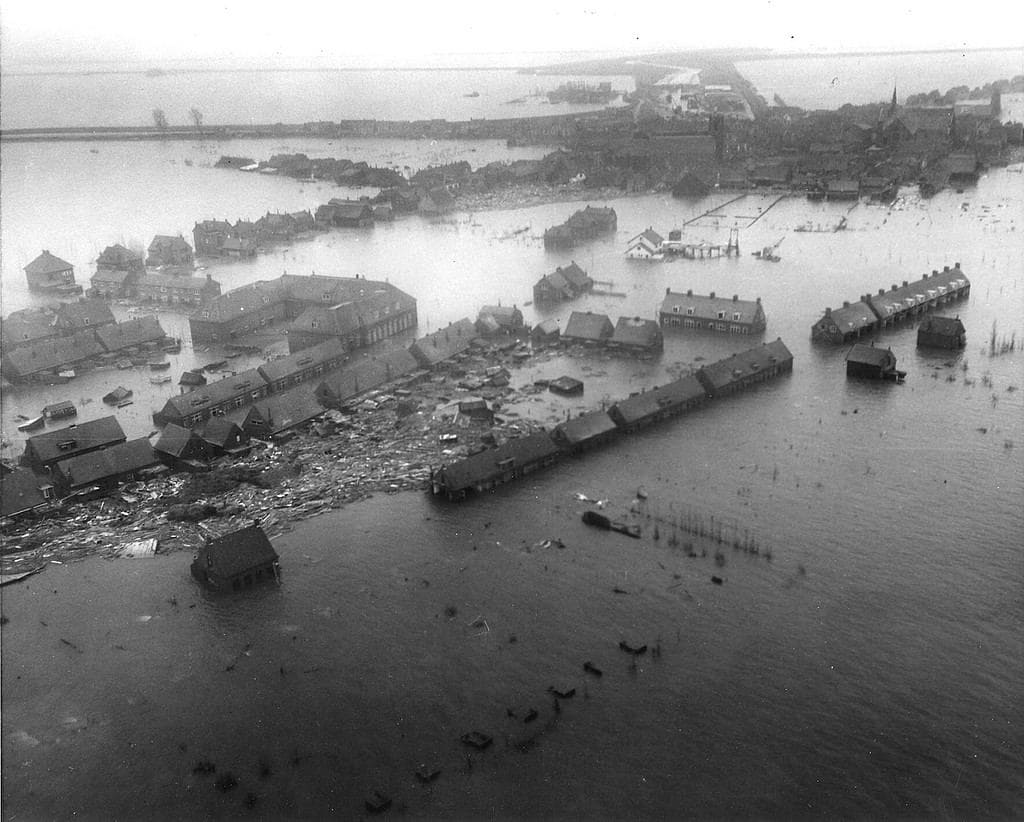
In the low-lying landscape of the Netherlands, flooding was a fact of life. Over the years, taming the sea became a source of pride and wealth, and the sophisticated series of dams, sluices, locks, dikes, and storm surge barriers became a matter of national identity.
The coastal defenses promised to shield the nation from even the most powerful storms. No disaster like the dreaded Watersnoodramp would ever happen again.
It worked.
The Delta Works, as the project was named, quickly became the poster child of hard concrete coastal defense. Neighboring Germany and other countries learned from the Dutch, and soon, large concrete dikes became the norm in Europe.
But all was not well.
Environmental scientists have long highlighted the many flaws of this hard engineering approach and the long-term problems it can cause. Hard concrete barriers increase erosion in some areas and cause excessive sedimentation in others; they destroy habitats and disrupt tidal dynamics, affecting the entire coast; they affect the quality of sandbanks, vegetation, and dunes in the area. And that’s just to name a few of the problems.
To make matters even worse, there’s also climate change. Sea levels are rising and storm surges are becoming more common across the world, as are all sorts of extreme weather events. This risks overcoming the hard, immobile engineered barriers.
This issue isn’t unique to the Netherlands. About 40% of the world’s population lives within 100 kilometers of the coast. It’s never been more important to safeguard our shorelines.
We could just keep building bigger dikes and barriers. But there’s an increasing realization that brute force may not be the answer. Instead, scientists and local communities are now looking towards nature instead.
Enter Langwarder Groden
Nature-inspired coastal management is gaining traction due to its sustainable, long-term benefits for both communities and ecosystems.
This isn’t just a promising theory. Real-world examples, like the Langwarder Groden in Lower Saxony, Germany, showcase its potential.
Leena Karrasch, a coastal protection expert at the University of Oldenburg with over a decade of experience, explains:
“In places like the Netherlands and northern Germany, we use a distinct dike system to shield against storm surges. This comprises a primary, inner dike, and a secondary, ‘summer dike.'”
The innovation at Langwarder Groden is the deliberate opening of the outer dike, permitting saltwater to naturally ebb and flow between the two barriers.
"By doing this, we cultivate salt marsh habitats, which not only boosts biodiversity but also strengthens natural defenses against surges,” says Karrasch.
Beyond ecological advantages, this design also acts as a buffer. During storm surges, water fills the space between the dikes, alleviating the pressure on the mainland. It serves as a natural pressure relief system, ensuring that the full force of the surge doesn't assault the primary dike.
“Before the summer dike was opened, this place was used for agriculture, and there were not many species of birds or plants left, so it was not very biodiverse. It was just used for grazing of cattle. It was not in a good state for biodiversity. And that's why they thought it would be interesting or it would be good to let nature be nature and leave the water in and out,” said Evke Schulte-Güstenberg, who studies coastal management.
The story of Langwarder Groden serves as an inspiration that highlights the power of nature-based solutions — a huge field that goes far beyond salt marshes and flood barriers. But this is just one example of what experts increasingly refer to as:
Building with nature
Coastal ecosystems are among the most vulnerable in the world, facing constant threats, many stemming from human activity. As communities grapple with escalating climate change and extreme weather, turning to nature-based solutions could be a lifeline.
The concept of collaborating with nature to manage coastlines isn't novel. Historically, humans have relied on nature for coastal protection for centuries.
“Nature-based solutions are how people survived in the past, so it’s not something new. Most of the things that we are using today were also used in the past because local communities knew exactly what to do,” says Joana Gaspar de Freitas, an environmental historian at the University of Lisbon, who focuses on coastal areas.
In recent times, nature-based solutions have re-emerged as a more economical and holistic approach to global dilemmas. Often described as "building with nature" or "environmental co-design," this strategy emphasizes collaboration with the environment in a way that’s cost-effective and brings numerous secondary benefits.
The International Union for Conservation of Nature (IUCN) has developed a Global Standard for Nature-based Solutions to guide their design, implementation, and monitoring. The International Panel on Climate Change (IPCC) also acknowledged nature-based solutions as a key tool to mitigate the effects of climate change — and this is particularly true for coasts. But, at their core, nature-based strategies are all about weaving natural processes and ecosystems into our coastal infrastructure.
This “green engineering” approach contrasts with traditional, “gray engineering” solutions (like big concrete dikes) which often work against nature. In green engineering, nature becomes a stakeholder — it does some of the work, but it also gets some of the benefits.
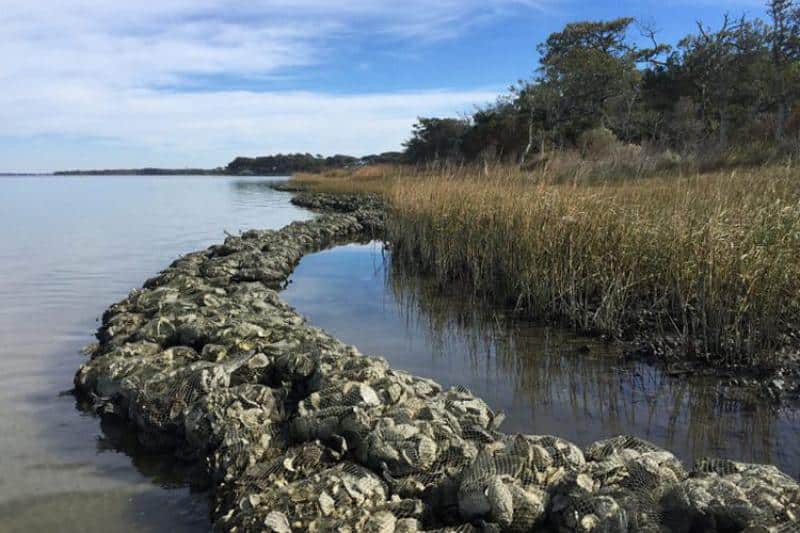
Natural defenses like mangroves, dunes, and coral reefs serve as shields against storm surges and rising sea levels. By aligning with nature, we amplify coastal resilience, benefiting both humans and wildlife. Habitats are preserved or restored, acting as protective bulwarks.
This approach often creates or restores habitats that benefit both human communities and local wildlife. Essentially, these ecosystems act as buffers or protective areas, safeguarding coasts either by themselves or in conjunction with man-made barriers — often, at lower costs.
Although all coasts have their own unique situation, there is no shortage of nature-based solutions to choose from.
Sand Dunes: Bridging Centuries of Coastal Resilience
Dunes work as buffer areas, says Gaspar de Freitas, and we’ve known this for some time.
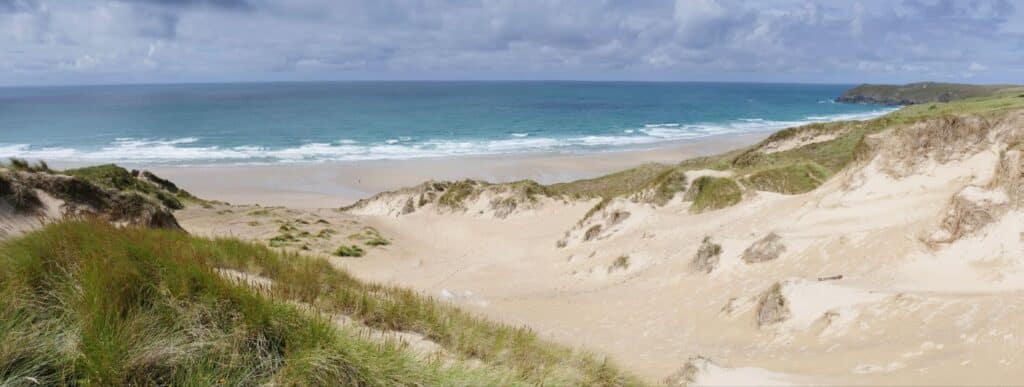
Dunes act as a barrier between the land and the sea. When waves or storm surges crash onto the shore, they absorb the brunt of the impact, reducing the force of the waves and preventing or reducing flooding and erosion inland. Sand dunes also contain, well, a lot of sand which can help replenish the beach, helping it recover after erosion events.
Plants also play a role in coastal dune systems. Plants that grow on dunes have extensive root systems that bind the sand together. This network of roots stabilizes the dune, making it less susceptible to wind and wave erosion. Additionally, these plants capture windblown sand, leading to dune growth. Coastal forests, often comprising trees and shrubs that are adapted to salty, windy, and sandy conditions, can supercharge the dunes, offering even more resilience against erosion and extreme weather events such as storm surges.
“Nowadays, a lot of countries are investing in rebuilding and protecting the dunes. They’re not allowing more construction on the dunes in order to use them as buffer areas.”
The most common way to protect dunes (putting up fences and planting vegetation) is exactly how people have been doing it since at least the 18th century, Gaspar de Freitas says, adding that the vegetation “keeps the dunes ‘alive’”.
Gaspar de Freitas documented one particular case in Portugal in which, during the 19th century, local communities kept the area behind the dunes forested and constructed a drainage system. This approach of using a natural process and enhancing it with well-planned engineering is strikingly modern.
We can commonly see such areas across much of the Portuguese coast. But similar approaches have also been deployed in areas like Brazil, Mozambique, and Australia. Whether it’s nurturing an existing dune system or rejuvenating a lost one, dune management can aid coastal protection.

Human endeavors have not always been kind to these sandy protectors. The allure of coastal tourism, particularly since the 19th century, has led to extensive dune degradation. Essentially, in the 19th century, people (especially in Europe and the US) started seeing coastlines as tourist areas. This expanded in the 20th century with mass tourism, as many sought the economic opportunities that come with increasing tourist populations.
“People started to move to the coastal area, they started to build on the coasts, and then the problems started. They destroyed the dunes and now they have no protection.”
But we can’t blame it all on pesky tourists. In virtually every place where humans have built on the coast, sand dunes have suffered. To make matters even worse, climate change and subsequent extreme weather accentuate sand dune erosion.
That’s why, increasingly, coastal management projects are focusing on sand dune protection and restoration. In Fiji, for instance, dune management is expected to play a key role in building community climate resilience. The plan is to reforest areas around the dunes, protecting against erosion and storms.
In South Africa, a sand-trapping system was used to build up sand in the dunes, supplementing the natural deposition of sand. The cost of building (and maintaining) the sand trapping system was significantly lower than the costs of alternative “gray” (hard engineering) infrastructure. In countries with long coastlines like the US and Brazil, sand dunes are increasingly in the limelight for coastal protection.
It’s probably telling that the Netherlands, which emphasizes coastal protection so much, has more recently been focusing on dunes. But the Netherlands isn’t just nurturing its existing dunes — it’s making them higher and larger.

“In the Netherlands, you have the beach, and behind the beach, you have a huge cordon of dunes 10–14 meters high. The dunes have not been this high for a long time. They were raised. They made sure that there was vegetation and enough sediment in front of them on the dunes,” says Florin Zainescu, a coastal researcher at Strasbourg University.
“Currently, in the Netherlands, we now have an extraordinary buffer zone of resilience to any storms or sea level rise,” he added.
But not all natural coastal defenses are on land — some are underwater.
Coral reefs: the silent guardians of our coastlines
Coral reefs are vibrant, underwater ecosystems formed through the accumulation of calcium carbonate secreted by tiny coral polyps. But there’s more to these coral colonies than just a haven for marine life and its beauty. For coastal protection, they are unsung heroes — protective walls against the might of waves and storms for numerous coastlines.
Corals act as a natural barrier against the relentless forces of waves, storms, and floods, shielding property and infrastructure, keeping coastlines free of erosion, and saving lives.
Because of their hard and jagged structure, coral reefs can reduce wave energy by a whopping 97%, offering essential protection against floods and storm surges. This also ensures that water on the shore-facing side of the reef is calm, which supports the trapping and accretion of sediment.
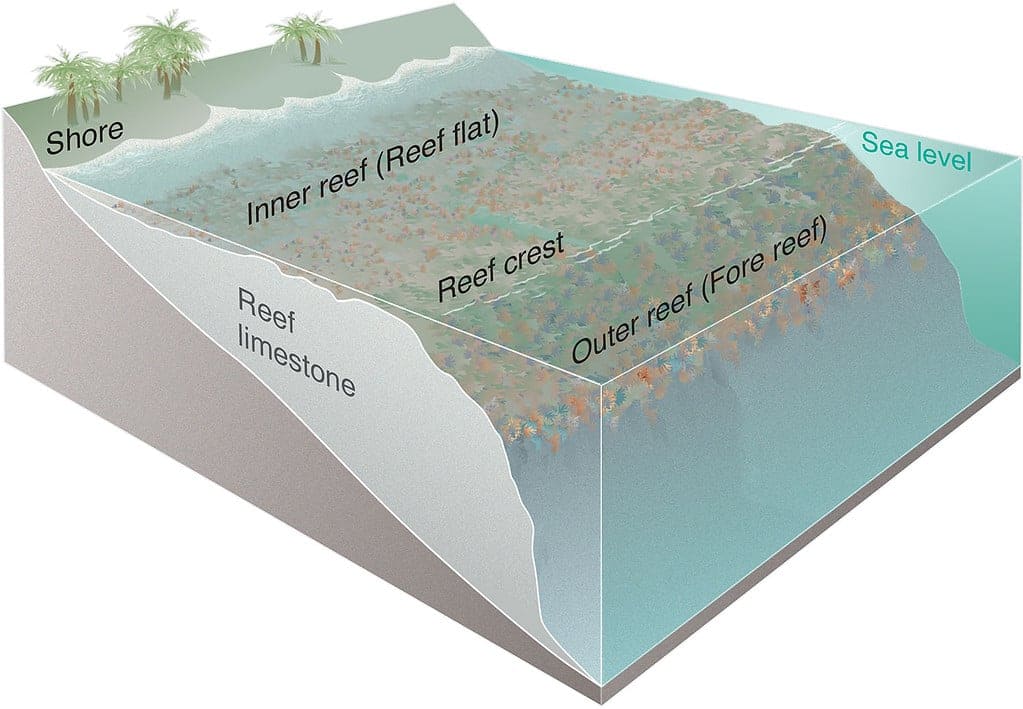
Although they cover less than 1% of the ocean floor, coral reefs provide homes to nearly a quarter of all known marine species. There are over 800 species of reef-building corals across the world. Nearly 450 million people across 112 countries live within 30 kilometers of coral reefs.
“Reef building corals are some of the main reef organisms capable of constructing these barriers that are very large and very visible, sometimes from space such as the Great Barrier Reef,” says Sonia Bejarano, the head of the Reef Systems working group at the Leibniz Centre for Tropical Marine Research (ZMT) in Bremen, Germany.
“These structures are naturally strong enough to protect thousands of kilometres of shorelines from erosion and flooding. This function is quite important in the tropical belt where there are lots of low and middle-income countries. So it's very important for many, many people that are not in the wealthiest of situations,” the researcher adds.
Despite all this, reefs are rarely assessed for their coastal protection service. Instead, conservation often centers on the economic and marine wildlife opportunities that these reefs provide.

To get an idea of how much of a difference reefs can make, you only need to look at the small fishing town of Grenville, on the Caribbean island of Grenada.
In 2004, the category 3 hurricane Ivan struck Grenada, killing 28 and causing damage estimated at twice the nation’s annual GDP. The island’s critical infrastructure was left in shambles, and only two out of 75 public schools were left in working condition. At least part of the reason why Ivan was so devastating is linked to the gradual degradation of the island’s reefs.
Researchers at the University of California-Santa Cruz and The Nature Conservancy showed that a relatively small patch of healthy coral reef keeps more than half of the Grenville Bay coastline stable and in equilibrium. Meanwhile, reef degradation in other areas of the bay is linked to chronic coastal erosion and flooding, which affects the most vulnerable local communities along the bay.
“Coral reefs protect shorelines from erosion by their basic principle of growth and accumulation of calcium carbonate, (or limestone). Only some kinds of corals have the ability to capture materials from the water to build their skeletons, and this process takes years and years. But that's how they build barrier reefs which are these strong limestone-made structures that break the waves as they are incoming to the land,” says Bejarano.
When corals die, the energy of powerful waves reaching the shore naturally increases as the obstacle posed by the reef disappears. This also accelerates coastal erosion.
Locals in Grenville have tried to adapt by building makeshift barriers made of tires and driftwood in a desperate effort to protect their homes and slow down erosion, but this did little to help.
Luckily, a team of scientists got involved and Grenville Bay developed an innovative coral reef restoration project called At the Water's Edge (AWE). In 2015, researchers field-tested an artificial reef-based breakaway structure — one of the few examples of reef restoration across the world designed primarily for enhancing coastal resilience and decreasing the community’s vulnerability to erosion and flooding.
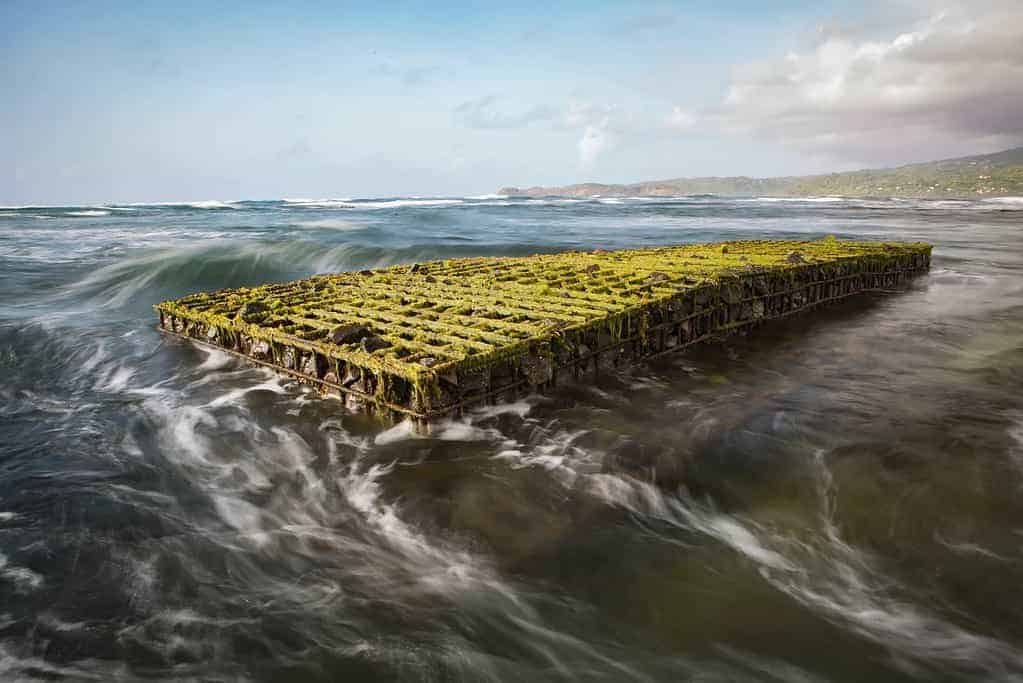
The pioneering reef restoration initiative hinges on the utilization of economical, locally sourced materials and labor. Live coral fragments from the existing reef were artfully positioned on the structure to facilitate the natural proliferation of coral reefs — and it worked. The artificial reef became a hub for biodiversity while also offering protection to the northern portion of Grenville Bay.
Grenada’s reef strategy could also be deployed in other areas. Tropical developing nations and Small Island States, in particular, are best suited for coral reefs. But worldwide, millions of people grappling with flooding, erosion and increasingly frequent natural disasters could benefit from them.
As such, the AWE approach is extremely valuable. It is a replicable blueprint for small island communities, which remain acutely vulnerable to the repercussions of climate change. Now more than ever, vulnerable communities need such success stories — as corals all around are in big trouble.
The future of coral reefs is in jeopardy due to water pollution, encroaching human activity, and climate change. The International Panel on Climate Change projected that coral reefs could decline by between 70% and (a staggering) 99% at 2 °C (3.6 °F) of warming compared to pre-industrial levels. The planet is already on a trajectory for more than 2 °C warming, which could spell doom for the vast majority of corals.
“They have been through sea level rise and hot temperatures similar to the ones we have now. But they have never been exposed to so much in so little time. Because it's not only the temperature: it is the acidity of the water, the pollutants coming from rivers, from fertilizers, it’s like everything all at once,” says Bejarano.
This is why communities who aspire to recover their lost and dwindling reefs must first go through a serious assessment.
“If a community is thinking about establishing a reef in a place that used to have one but it died, the first consideration is to look into what killed it in the first place. Was it a heatwave? Is there a river that is throwing out pollutants that are not conducive to coral growth? And so the first measure would be to mitigate whatever's going on to maximize the success of a future reef developing there,” says Bejarano.
For tropical communities where reefs are no longer a viable option, they could turn to another ally: mangroves.
Mangroves save cities and villages

Super Typhoon Haiyan, known as Typhoon Yolanda in the Philippines, was one of the most powerful tropical cyclones ever recorded. It made landfall on November 8, 2013, causing unprecedented destruction in the Philippines.
Amplified by abnormally warm ocean temperatures, Haiyan developed roof-tearing winds of up to 195 mph (315 km/h) and gusts exceeding 230 mph (370 km/h), reaching Category 5 status, the highest level on the Saffir-Simpson scale.
Haiyan's fierce winds combined with torrential rainfall and towering storm surges wreaked havoc across the nation, wiping entire communities off the map and causing tragic loss of life.
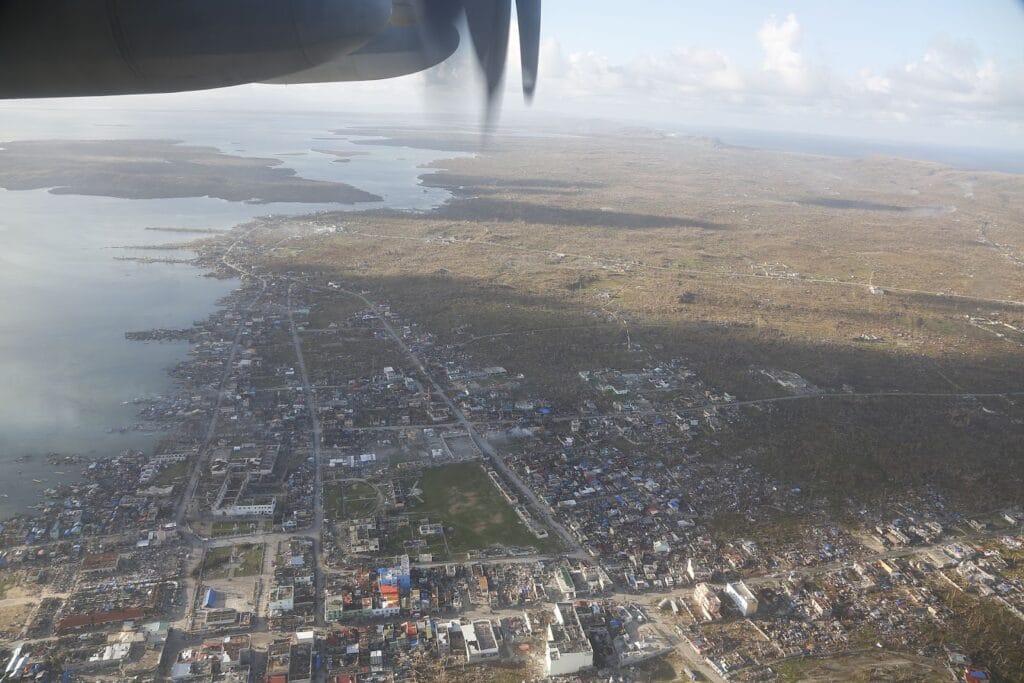
But within this sea of destruction, the quaint coastal town of Palompon on Leyte Island somehow weathered the storm. Palompon emerged battered but still intact.
Over 80% of the town’s infrastructure sustained heavy damage and virtually all the roofs were torn off as the very eye of the storm passed through Palompon. Seven people were killed.
That still sounds terrible but in nearby Palo, on the same Leyte island, nearly a thousand people died. With a population of 75,000, Palo is only 20% larger than Palompon but its casualties were more than 100 times greater.
Palompon locals received an advanced warning to evacuate to the higher ground two days before the typhoon hit. That certainly saved many lives, but what really protected the community was a natural barrier against the storm surge: a mangrove forest.
The mangrove plantation is located only a few hundred meters from the shoreline on a small island called Tabuk. While in other communities such mangrove forests were torn down to make way for development, the Tabuk mangroves were declared a fish and bird sanctuary in 1995.
Originally, the conservation measure was put in place because locals were complaining their fish stocks were getting dangerously low. As is the case in many places across the coastlines of the Philippines, fishing is often the primary occupation of Palompon locals who rely on it to put food on the table for their families.
After Tabuk became protected, fish started spawning like crazy and the local fishermen were ecstatic. But even though the conservation program was born of self-interest, the mangroves would show their true worth nearly two decades later once Haiyan arrived.
“If we didn’t protect the mangroves, Palompon would’ve completely been wiped out,” Raoul Bacalla, Palompon’s disaster risk reduction and management (DRRM) chief, told Rappler.
The protective prowess of mangroves isn't unique to Palompon. As Martin Zimmer, a Mangrove Ecology Professor at the University of Bremen, points out, mangroves have shielded communities from the devastating impacts of storm surges and even tsunamis.
“We've seen several examples of mangroves providing protection during heavy storm surges,” says Zimmer. Even during devastating tsunamis that destroy the mangroves themselves, mangroves still protect the infrastructure and villages behind them.
“So we certainly believe that mangrove forests, and other coastal ecosystems as well, protect the coast and the people living there from storm surges,” he adds.
A 2009 study by researchers at the University of Delhi in India and Duke University in the US found that villages with wider stretches of mangrove forest between them and the coast had experienced significantly fewer deaths during the super cyclone that struck Orissa, India, in 1999, than ones with narrower or no mangroves. Also, studies show that mangroves essentially pay for themselves.
Illustration from “Mangrove restoration: to plant or not to plant?” handbook by Wetlands International.
Like in Langwarder Groden, not everyone was initially on board with the plan to reforest the mangrove island. Locals who lived on the island itself protested because they would have to be forced out under the new rules, but eventually they were compensated and relocated by the local government.
This underscores the importance of managing stakeholder expectations and conflicting interests so such projects can take off.

The Hybrid approach: when nature and people work together
Each coastline has its unique features but solely relying on natural infrastructure may not be enough, especially given the escalating threats from climate change. Recent research shows “once in a century” floods could become yearly by the end of the century.
So, how do we defend our shores sustainably?

“Nobody likes the hard engineering solutions like high walls, high dikes, or huge steel doors like they use in the Netherlands. Nature-based solutions are more attractive but they have two main disadvantages: they take a long time (a mangrove takes about a decade to fully grow) and they are fragile,” says Walter Leal, who holds the Chairs of Climate Change Management at the Hamburg University of Applied Sciences (Germany) and Environment and Technology at Manchester Metropolitan University (UK)
“A big hurricane can come and instantly destroy a mangrove forest. So therefore we need a combination of both, really: the hard engineering but also the nature-based solutions.”
Such a strategy is called “hybrid” infrastructure. It fuses the strengths of natural and artificial elements. In some countries, it's now being widely suggested that coastal policies and planning integrate these combined approaches.
“These natural and hybrid approaches may be more cost-effective in the long-run in comparison to built infrastructure, can strengthen the social, economic and ecological resilience of coasts, maintain the provisioning of coastal ecosystem services, and prevent the loss of life and property,” a recent study concluded.
“The time is also ripe to enhance coastal resilience by incorporating natural and hybrid infrastructure into coastal policy and planning.”

Man-made barriers initially provide resilience but can deteriorate or pose challenges in the future. On the other hand, new natural infrastructure starts off fragile but strengthens as the ecosystem matures. This duality creates a synergy between the two approaches.
The most straightforward approach would be the building of permanent, temporary, or removable seawalls to protect natural infrastructure in its early stages. In places like Langwarder Groden, or along some parts of the UK’s coastlines, a converse approach is used: natural infrastructure is used to protect hard structures.
In response to the devastating 2005 Hurricane Katrina, New Orleans has greatly improved and fortified structural protection around the city, including almost 350 miles of levees, flood walls, and numerous pump stations.
But the city also recognized that one of the big reasons they had such severe damage was the neglect and degradation of natural barriers. The State of Louisiana is now busy reconnecting the Mississippi River to adjacent wetlands that are deteriorating by constructing large sediment diversions.
“Until now, the idea has been that dikes can solve any problem. This changed in the United States after Hurricane Katrina hit the city of New Orleans when 2,000 people died and a large part of the city was flooded. The population of the city decreased by several hundred thousand from then until now because the quality of life suffered,” said Florin Zainescu.
“This was ultimately due to the fact that some dikes that were supposed to protect the city broke although they were built to withstand the level of water that came with the hurricane.”
“Before Katrina, the Americans built dikes that could withstand a major event of a certain recurrence, let's say once every hundred years. Now, this kind of calculation no longer exists. Now, it is considered that no dike or dam is 100% fail-safe. There is always a small chance that the dike will break due to an extreme event.”
Another hybrid approach is the “living shoreline”. A living shoreline is a protected or stabilized coastal edge. This can be done through plants, rocks, sand, or more commonly, a combination of all of the above. Essentially, humans come in and expand or stabilize the shoreline in a way that enables the local ecosystem to thrive and grow.
Unlike a concrete seawall, a living shoreline can grow. The Chesapeake Bay in Maryland, for instance, was restored and stabilized by using sand and dredge material, logs, wetland plants, submerged aquatic vegetation, an oyster reef breakwater, and fish habitat structures.
The living shorelines approach became particularly popular in the US after people realized that large sea walls aren’t a panacea. The state of Maryland, for instance, passed the Living Shorelines Protection Act in 2008, but states like Virginia, New Jersey, New York and Mississippi also have living shoreline policies in place.

Highly urbanized areas are particularly incentivized to look for hybrid solutions as they often don’t have enough space to implement only natural infrastructure. In its strategic development plan, the city of New York identifies six hybrid approaches for coastal management:
- constructed wetlands and maritime forests;
- constructed reefs;
- constructed breakwater islands;
- channel shallowing;
- ecologically enhanced bulkheads and revetments;
- and living shorelines.
The city of Boston has also been heavily pursuing hybrid approaches that can make the city more resilient to storms, including a “Living with Water” strategy that was largely inspired by hybrid infrastructure recently deployed in the Netherlands — showing that, at least in some instances, communities can learn and implement solutions from other parts of the world (considering the region’s particularities, of course).
The Netherlands, which is still home to the most famous and extreme hydraulic structures, has shifted gears for some time, wising up to nature-based alternatives. A prime example is the Sand Engine in the south of the low-lying nation, which exploits natural dynamics to renourish the coast with sand. In doing so, erosion is prevented and coastal protection is increased.
When it comes to the hybrid model, something that’s both a strength and a challenge is that these approaches are relatively new. This means there’s a lot of room for improvement and innovation, but also, there’s little long-term data on how well these solutions work over the course of decades.
Plus, the costs can be massive. For instance, on the Mississippi River, authorities are looking to stabilize and restore the delta, which had been sinking due to previous management with dikes and levees. This deterioration happens on many navigable rivers, explains Zainescu, in which sediment dynamics and the natural development of the delta have been disrupted. The planned hybrid intervention includes a human-controlled delta protected by the erection of barrier islands.
“They spend hundreds of millions a year to restore these barrier islands, taking sediments from deep areas with some stormy, gigantic ships.”
No doubt, hybrid engineering approaches can be the best solution in some cases. But given the associated costs and that we still don’t know much about them, they’re no panacea either. In fact, implementing any nature-based solution can be a major challenge.
The challenge of nature-based solutions
Nature-based solutions, whether standalone or combined with hard engineering, offer significant benefits for coastal communities. However, these strategies aren't universally applicable. You can’t just transplant one strategy from one area to another. Every strategy must be tailored based on the unique needs of both the community and the ecosystem.
“Involving local communities is critical for sustainable management strategies, including maintaining biodiversity and the integrity of existing beach and dune systems,” says Jasper Knight, a geoscientist from the University of Witwatersrand in Johannesburg, South Africa, who has studied coastal environments.
Local communities can have a profound understanding of their surrounding environment, which can offer invaluable insight during the planning and implementation phases, Gaspar de Freitas also mentions. They often provide historical data and perspectives based on their long-term interaction with the coastal environment, which might not be captured in scientific studies.
Including local communities in the process can foster a sense of ownership and acceptance of the project, which is crucial for its success. Gray engineering often lulls communities into a false sense of security, thinking they are safe behind a concrete dike. Meanwhile, on the other hand, nature-based solutions can seem low-tech and unreliable, although this is not the case.
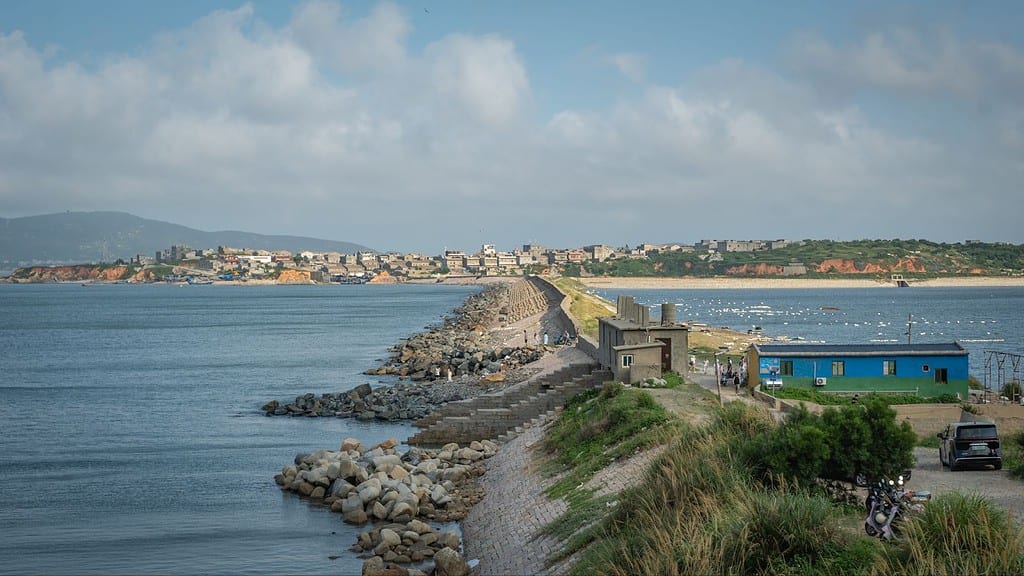
Another thing to consider — but which is often overlooked — is ongoing human oversight, says Zimmer. Continuous monitoring ensures that interventions are working as intended and allows for adjustments based on changing environmental conditions or new scientific insights. This feedback loop is essential to adapt to dynamic coastal environments and the uncertainties of climate change.
“You can’t just go, plant the trees, and then go home. The monitoring, of course, needs to involve the local people. They have to feel ownership and be accompanied by scientific approaches. You do that for 10-15 years and you see whether there's additional action needed.”
“For instance, there could be too many trees or a change in hydrodynamics because of sea level rise and you need to maybe even build a little fence or dike for a while that then will be removed once the mangroves established themselves.”
However, not all is rosy.
Nature-based and hybrid solutions typically take much longer to implement than gray engineering. Moreover, there are always competing interests that can restrict the deployment of solutions. Perhaps someone’s private beach needs to be moved to make way for a mangrove barrier or some piece of infrastructure that promises jobs needs to be canceled. Or, as was the case at Langwarder Groden, maybe the local community is concerned for its safety and has objections.
There’s also the elephant in the room: funding. A terrible flood can cause billions of dollars’ worth of damage and loss of life. But flood protection infrastructure isn’t exactly cheap either, and it’s rarely easy to get people to pay for prevention.
In the US, the cost of a new sea dike is estimated at nearly $30 million/km per meter of dike raised. In Vietnam, the cost is around $2.5 million/km. Rural dikes made of peat and clay are considerably cheaper, ranging from $5-14 million/km per meter of dike raised in the Netherlands to $0.1-0.2 million/km in Mozambique.
Nature-based solutions are also quite costly, and the coasts that need them the most often rely on international funding. Granted, nature-based solutions can be cost-effective in the long run — but the initial investment is still significant.
| Country/Region | Type | Cost Range |
| Multiple | Beach nourishment | $3–17.6/m^3 |
| Australia/United States | Dune Restoration | $7636 to $13,888/ha |
| United States | Beach restoration | $10.5–22.1 million/km |
| United States | Groin | $1.6 million/groin |
| Multiple | Wetland restoration | $67,128–228,647/ha |
| United States | Marshland creation | $3/m^3 |
| Global | Salt marshes | $11,100/ha |
| Multiple | Mangrove restoration | $1,191–38,982/ha |
| Multiple | Coral reef restoration | $89,269–1,826,651/ha |
| Developed | Oyster Reef | $66,821/ha |
| United Kingdom | Artificial reef Construction | $30,000–$90,000/100m |
Ironically, in some situations, a nature-based solution may be too cheap. How can that ever be a problem? Well, it can be if there’s some vested interest to only work on so-called “mega projects”.
“There is a consensus about the value of nature-based solutions. The problem we have is that these solutions don’t have the kind of government support that they should have,” said Leal.
“For governments, it is far more interesting and exciting to have money for large infrastructure projects than to focus on multiple smaller ones. That’s the paradox: they prefer their political kudos. That’s the barrier we are seeing.”
“Another part of the problem is that large banks, like the African Development Bank, are generally not interested in giving a small loan. They would much rather give a loan for $60 million than $300,000.”
To make matters even more challenging, many coastal areas are drastically understudied, which makes intervention more difficult. But one common thread emerges: effective communication and community involvement are key.
“Get everyone talking — not only talking to you as a researcher or as a person who is working in coastal protection management. You have so many stakeholders that you should incorporate,” said Schulte-Güstenberg. In Langwarder Groden, the plan only worked when they involved all the stakeholders, all the people living in the area.
This communication has to be done from the very beginning, even before you plan the project, says Zimmer.
“You have to go there to talk to people and tell them ‘Look, we have this idea and what do you think about it, would you be in for it, how would you do it?' That's the major first step because then they feel ownership and they feel stewardship.”
For countries in the Global South, which are exposed to the greatest coastal risks associated with climate change, nature-based solutions are particularly well suited.
“In the South Pacific, nature-based solutions are the ones that are more readily available. They don’t have the resources to invest millions in building hard barriers. Most of the nature-based solutions are most applicable to the South Pacific region,” said Walter Leal.
“In the Caribbean region, there is a great movement in restoring ecosystems and restoring coral reefs and mangroves. The whole system helps: they have the appropriate temperature, they have the sunshine, which makes these ecosystems grow a little easier,” he added.
However, nature-based solutions are still lacking in many areas in the Global South. Knight mentions that in South Africa, for instance, the use of nature-based solutions as a specific overarching practice has not been done systematically or as a national strategy. Many such areas are also understudied.
“Most of the South African coastline (which is over 1,700 kilometers long) is undeveloped and is largely unknown in terms of its dynamics. This means that issues of (for example) coastal erosion or biodiversity loss are unknown along many coastal stretches. Active coastal management has been focused along populated parts of the coastline.”

Coastline at Hermanus, Walker Bay, in South Africa. Image credits: Olga Ernst.
Studying the environment beforehand is crucial because nature-based solutions don’t always work better than gray engineering. Also, there’s a general lack of information on nature-based solutions in many communities. This means that local communities may be unaware of what’s at stake and may be difficult to mobilize as stakeholders.
Coastal managers worldwide routinely look at other regions to see what they are doing and how they can implement it. But even if the landforms and ecosystems are similar, the local community can make all the difference.
“The nature of local populations, economies, infrastructure and legislation may be very different and this is a limitation of just replicating strategies from elsewhere. In addition, there is a lack of technical expertise and knowledge in local municipalities and government departments in South Africa, as there is in many other developing world countries, and this is an added limitation,” adds Knight.
It’s also important to keep in mind, Knight says, that nature-based solutions by themselves won’t hold the sea back in the long term. Gaspar de Freitas also emphasizes that we simply can’t protect all areas.
So in this case, what can be done?
Giving nature some land back -- the biggest challenge of all

There’s one solution that absolutely must be considered in coastal management: managed retreat.
A managed retreat is not an ad hoc withdrawal from the coast. It’s a strategic and long-term decision. You withdraw from an area but you still manage it proactively. Essentially, managed retreat stands for the idea that humans need to act preemptively to be effective against the overall threat of climate change.
In managed retreat, you concede a zone near the coast. This becomes a nature-based buffer area that improves protection against flooding — much like in the case of Langwarder Groden. The economic loss from conceding the area is compensated by sustainable tourism and other co-benefits.
"The problem with hard engineering solutions is that they have to be maintained in perpetuity under sea level rise. And that's very, very expensive compared to simply relocating as sea level rises — that's a much more sensible, cost-effective kind of way of approaching the problem," says Neil Saintilan, professor of environmental studies at Macquarie University in Sydney.
"In other places, it just would make more sense to transition people away from these hazard zones. Some places people are abandoning coastal wetlands and moving to higher ground, and that's the cheaper option. It depends on what opportunities there, what is the exposure, and what is the adaptive capacity of the economy to bring in some of these more expensive solutions"
Many researchers believe this is an important tool because realistically, we won’t be able to protect all coasts.
“We can protect some cities, we can protect some areas. But our coasts are huge and there's a lot of communities that don't have the resources to protect the coastlines. So at some point, they will have to retreat and go back,” says Gaspar de Freitas.
Of course, this approach is bound to be unpopular. For starters, it breaks with the ‘hold the line’ attitude we’ve had to coastlines for over a century. You’re essentially asking people to give up on some land that they could use. Even in the relatively affluent and tame community of Langwarder Groden, this led to some heated situations.
Although the Langwarder Groden dike restructuring project has been approved since the early 2000s, the local community in Butjadingen changed its mind and started to actively resist it in 2010.. They banded together, founded an NGO, and held events in protest. Politicians were involved and the whole affair risked degenerating into an utter failure.
The headlines started pouring in: “Association wants to highlight dangers for citizens” (NWZ March 16, 2010), “Dike opening ‘is irresponsible’” (district newspaper Wesermarsch April 3, 2010), “Do not touch the summer dike” (NWZ March 2, 2011), “Vigils on the summer dike” (district newspaper Wesermarsch March 3, 2011), “When nature conservation wants your land” (Top Agrar April, 2010), and so on. You get the picture.
Why was Butjadingen not happy with the new plans for Langwarder Groden? The site has been used for agriculture by the locals for generations and the rewilding of the area, and they feared it would entail a loss of revenue, as well as a piece of their cultural heritage.
Rampant misinformation was also spread concerning the risks faced by the community, who believed opening up the summer dike could flood the small town. In reality, the opposite is true as the marsh and plants have a powerful dampening effect on the wave energy — yet this wasn’t conveyed effectively enough.
Eventually, all the stakeholders got together and reached a compromise after discussing multiple options. Some agricultural land was to be preserved and the summer dike was only opened in a few places rather than being completely removed as designed during one of the original plans. The main dike was raised substantially to dispel any flooding concerns. In the end, everyone appears to be happy with the result – but the entire process was quite messy.
Some agricultural land was to be preserved and the summer dike was only opened in a few places rather than being completely removed as designed during one of the original plans. The main dike was raised substantially to dispel any flooding concerns. In the end, everyone was happy — but the entire process was quite messy.
Managed retreat can seem like a counterproductive approach as many communities have fought for generations to hold the coastline in check (and in some cases, even expand it). The case at Langwarder Groden shows how retreating can be beneficial. You’re not just abandoning the land: you’re managing it in a way that prioritizes nature-based solutions and overall, provides benefits for the community. Sometimes, managed retreat is simply a better use of our resources and a way to find the best balance for our coastlines. It’s a way to help nature help us.
Acceptance of such measures can also be improved. Managed retreat may seem unacceptable now, but if we look back, historically, we’d only be making small concessions, says Gaspar de Freitas.
“History can help people and communities to understand that their connection with the sea in many cases is not as old as they think. They are now there, but their ancestors, three or four generations ago, probably weren't. So if they change, that's nothing bad. The way we live is not the way we always did. History shows that some of our traditions, in fact, are only 50 years old or something. There were many traditions and some of them were not connected to the ocean. We are more land people in most cases than maritime people.”
It’s perfectly natural for coastal areas to evolve, whether by gaining or losing territory, Zainescu also mentions. What’s important is that the community still has enough space for its essential activities.
“The fact that we have cities right on the coast that prevent natural systems from moving is a big problem,” says Zainescu.
Almost 80% of all major cities in the world are located on a coastline. These sprawling urban centers have become so developed that there is little space left for new living and working space or infrastructure — let alone buffer areas. It’s entrapment by our own design.
“Normally, what people did was to live behind salt marshes behind the dunes and not on the beach because living on a beach was too dangerous. They knew that the coast is very dynamic, and it's always changing so it's not the best place to live.”
Working with nature and not against it
“The place here is so special,” says Annelie Hedden, park ranger at Langwarder Groden. “Because traditionally, the people here fight against the sea.”
Since the dike opening at Langwarder Groden, the place has undergone a metamorphosis, turning from a hard barrier into a dynamic, hybrid system where man-made engineering and nature work hand in hand to protect the coast.
In only a decade, Langwarder Groden has become unrecognizable. It has transformed from a barren agricultural plot of land into a thriving ecosystem home to many species of plants, birds, and insects. It’s also a bustling scene for tourists, which helps strengthen a connection with nature and significantly contributes to the local economy.
Moreover, within the biodiversity-rich salt marsh, there is still room for the town’s iconic cattle and sheep. The public has taken a step back and they’re now reaping the benefits showing that managed retreat isn’t such a crazy idea after all.
As the specter of climate change looms ever larger, the remarkable story of Langwarder Groden emerges as a beacon of hope. It underscores the urgent need for proactive research, community engagement, and the pursuit of solutions that blend local insights with global expertise. Securing funds may be challenging, but the environmental and economic dividends affirm the merit of our investment.
Concrete walls may hold back the sea temporarily, but they cannot foster life. Our coastlines were never meant to be static lines on a map but thriving, living ecosystems. It's time to rekindle our symbiotic relationship with nature and let it once again fortify our shores.
It’s time to go back to our roots and help nature — so it can help us.
“Don’t be afraid of wilderness,” Annelie says.
This story was supported by a grant from the Earth Journalism Network.
[no_toc]
